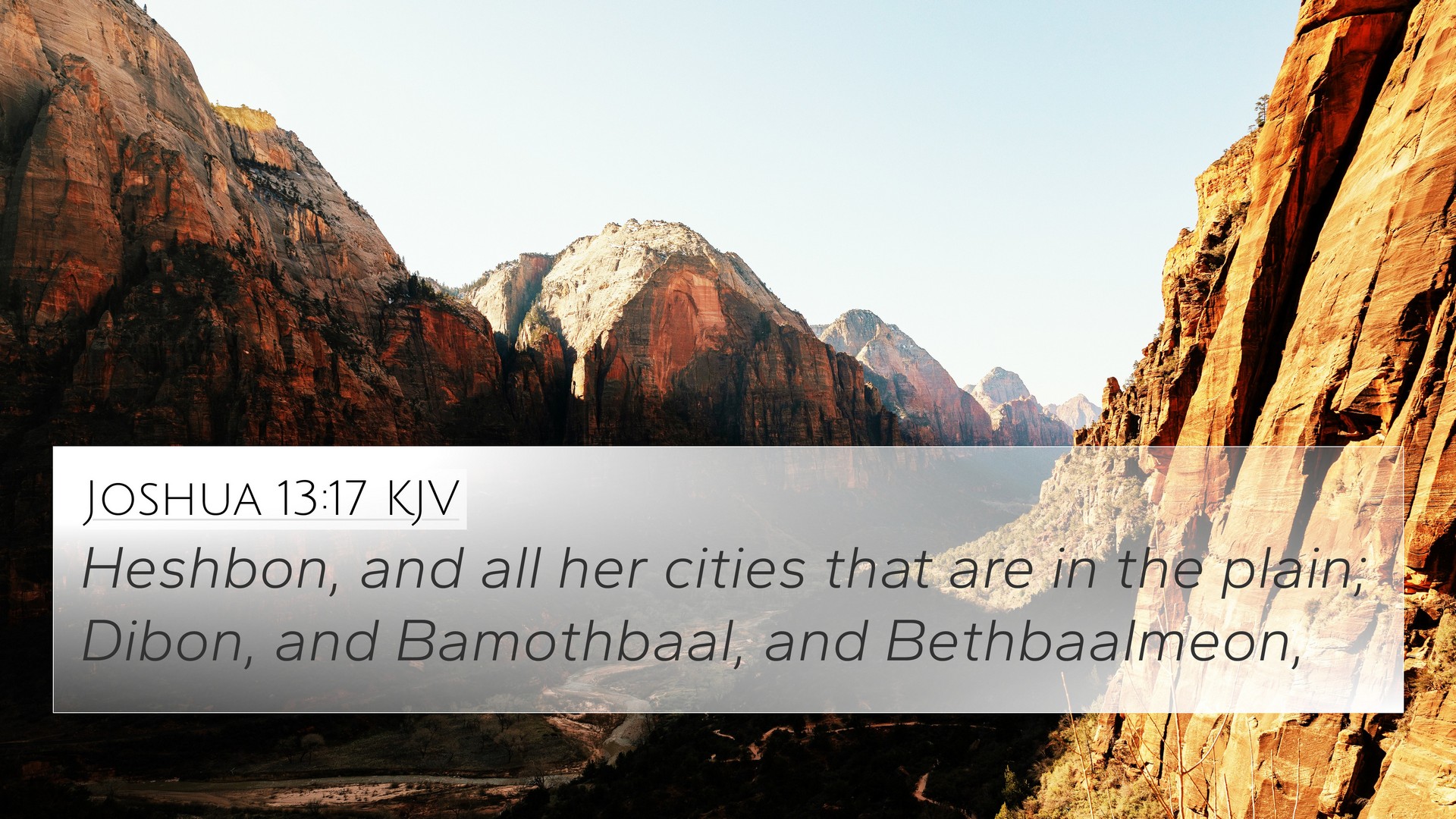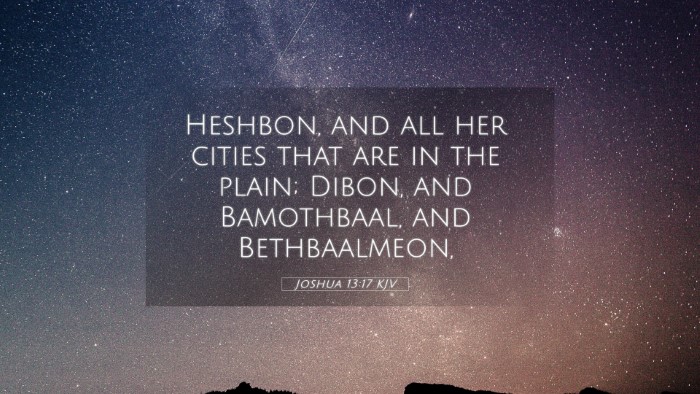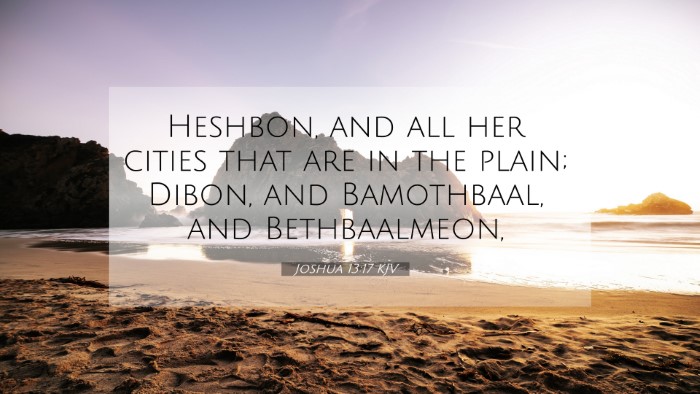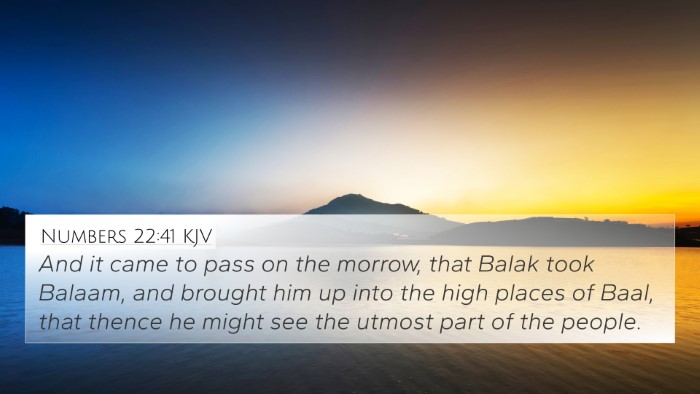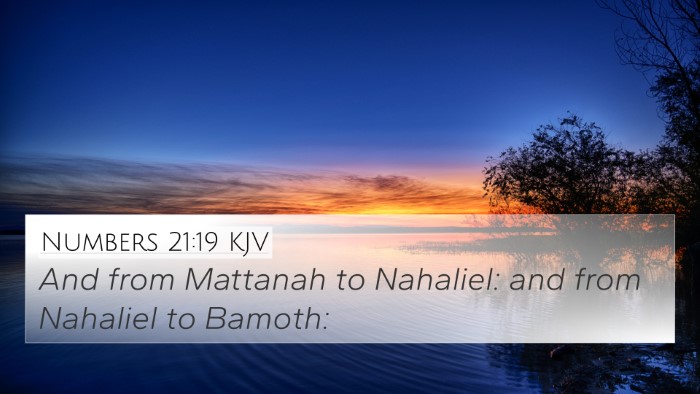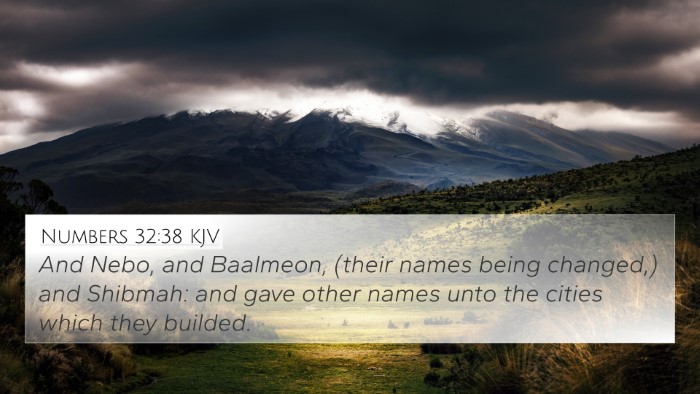Understanding Joshua 13:17
Joshua 13:17 states:
"And Heshbon, which was the city of Sihon, king of the Amorites, and Aroer, which is upon the bank of the river Arnon, and the half city of Gilead, and the border of the Geshurites and Maachathites, and all mount Hermon, and all Bashan which was called the land of giants."
Summary of Joshua 13:17
This verse describes a significant geographical division in the allocation of the land of Canaan. The mention of cities and regions emphasizes the transition of power and the occupancy of the land that was promised to the Israelites. This allocation represents both physical and spiritual promises made by God to His people.
Commentary Insights
-
Matthew Henry's Commentary:
Henry highlights the transfer of land from Israel's enemies, specifically from the Amorites, illustrating God's faithfulness to His covenant. The cities named, especially Heshbon, were pivotal strongholds, which signify both the victory of Israel and the importance of God's guidance in securing the land.
-
Albert Barnes' Notes:
Barnes emphasizes the significance of Aroer as a border marker. This delineation serves as a reminder of Israel’s boundaries and the divine distribution of the land, which is essential in understanding the historical context of the Israelites in Canaan.
-
Adam Clarke's Commentary:
Clarke elaborates on the "land of giants," referring to the Rephaim, which underscores the challenges faced by the Israelites. His insights into the origins of these giants provide a fascinating angle on the spiritual battles the Israelites encountered while claiming their inheritance.
Bible Cross-References
This verse has several connections with various parts of Scripture that enrich its meaning and offer a broader understanding:
- Numbers 21:26 - The mention of the king of the Amorites.
- Deuteronomy 3:10-11 - Discusses Og, the king of Bashan, linking to the giants mentioned.
- Joshua 12:4-5 - Further explains the conquest of the kings of the Amorites and the lands inherited.
- Deuteronomy 2:24-25 - The call to go into King Sihon’s land and engage in battle.
- 1 Chronicles 5:11-16 - Provides genealogical references to the lands of Gilead.
- Hebrews 11:32-34 - Acknowledges the faith of the Israelites in conquering kingdoms and receiving promises.
- Joshua 1:3-4 - The command to possess the land from the wilderness to the Great River.
Thematic Connections
This verse captures themes of:
- Faithfulness of God: The allocation of land affirms God's promises.
- Victory over Enemies: It highlights the ongoing struggle against giants and powerful kings, demonstrating God’s assistance in every battle.
- Identity of the Israelites: The land claimed reinforces their identity as God’s chosen people.
Conclusion
Joshua 13:17 serves not just as a historical account but as a vital theological reflection on God's promises and the journey of the Israelites into their inheritance. Through cross-referencing this verse with related Scriptures, one can observe how the themes of conquest, identity, and divine promise interweave throughout the biblical narrative.
